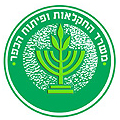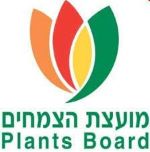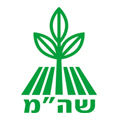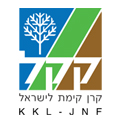The effect of vegetation on solar PV panel efficiency was tested in a commercial solar farm in the Negev Desert of Israel. Panel temperature in two test sites of 0.22 hectares each with different plant treatments was up to 3.5oC lower at midday compared to the panel temperature in an adjacent reference plot with bare loess soil. The temperature difference was not uniform, being greatest for the upper panels in a ground-mounted array (average reduction 2.2°C), and lowest for panels closest to the ground (1.0°C reduction). The temperature reduction is attributed primarily to smaller fluxes of solar radiation reflected from the plants, which have a lower albedo than the bare soil, and to less infrared radiation emitted from the plants, which are cooler. A small reduction in air temperature due to evapotranspiration also contributed to this outcome. Electricity production measured in the test plots was approximately 1% higher over the summer test period. The Land Equivalent Ratio (LER) of the test plots was 1.67, reflecting the combined contribution of the increased electricity production, the value of the crops, and the reduction in site maintenance costs.
https://www.geoteva.co.il/wpcontent/uploads/2021/06/ImprovingElectricalEfficiencyinPVFarmwithAg_Geoteva_AGRIV OLTAICS2021.pdf








